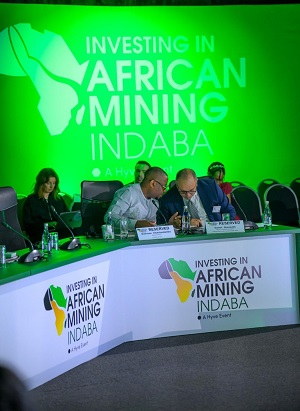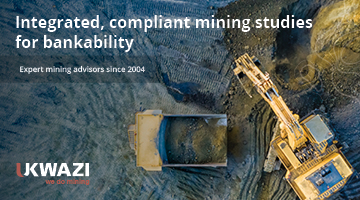As the continent enters a new era of mineral opportunity, infrastructure remains a challenge. Only when the continent’s countries, resources, markets and people are fully connected, can Africa reach its potential. A new report offers hope on how to finance these infrastructure needs.
 A confluence of dynamic developments in society and the global economy gives the African mining sector a number of exciting opportunities. However, a significant bottleneck remains in the continent’s infrastructure gap.
A confluence of dynamic developments in society and the global economy gives the African mining sector a number of exciting opportunities. However, a significant bottleneck remains in the continent’s infrastructure gap.
Key players are working to unlock this brake on growth, finding ways to better connect Africa through its road, rail, energy and digital corridors, so that its mining sector can truly thrive.
Investing in African Mining Indaba 2026 is placing infrastructure at the heart of its agenda, recognising it as the backbone of mining progress and continental transformation. With the theme “Stronger Together: Progress Through Partnerships,” MI26 will convene governments, capital owners, and industry leaders to forge the connections — physical and strategic — Africa needs to unlock its full mining potential.
“Infrastructure is the engine of transformation,” says Zeinab El-Sayed, head of government partnerships for Investing in African Mining Indaba. “African mining stakeholders are stronger together, but building integration requires roads, rail, communication, energy networks and air links.”
El-Sayed says infrastructure enables progress, allowing governments, the mining sector, communities and civil society to work together for the upliftment of the continent.
Trends coalesce
Significant global trends have also emerged that show a massive upside for the African mining industry. These include the growing importance of critical minerals vital for new technology, the global Just Energy Transition and industrial development on the continent.
In addition, as global demand for strategic minerals grows, downstream manufacturers are building closer relationships with miners and refiners. There is also increasing acceptance of the need to transform Africa from a raw-material exporter into a hub of innovative manufacturing.
Infrastructure gaps
However, enabling the transformation heralded by these exciting trends requires infrastructure.
Laura Nicholson, content and communities director for Investing in African Mining Indaba, says that while Africa’s mining resources can meet many emerging global needs, it is infrastructure that gets them to market.
“Infrastructure is one of the cornerstones of a thriving African mining sector,” says Nicholson. “Reliable transport and energy networks are essential for new mining projects, and strategic investment in infrastructure can transform Africa from a raw material exporter into a dynamic centre for innovation, manufacturing, and long-term growth.”
There remains a significant shortfall in the infrastructure required to enable this kind of transformation.
A recent report by Africa Finance Corporation notes that Africa’s road density remains low by global standards, averaging just 2.76km per 100km², compared with 138km per 100km² in India.
Approximately 90% of the continent’s railways remain publicly owned and constrained by limited investment capacity. Integration only exists in the SADC network;15% of Africa’s rail network is non-operational; and 13 countries lack direct rail connections to the sea.
Funding the build
A significant cause for optimism is that the financial resources to close Africa’s infrastructure gap are available on the continent. A report by Africa Finance Corporation, titled State of Africa’s Infrastructure 2025: Mobilising Domestic Capital, indicates that capital is not the main issue, it’s coordination.
The report says trillions in capital for new projects could be sourced within the continent’s own institutional savings pools. Innovative financial partnerships can powerfully unlock Africa’s wealth for its own development.
The report estimates that Africa holds more than $4 trillion in institutional savings – including banked savings, pension funds, insurance assets, sovereign wealth funds and public development funds. These represent an untapped source of investment that can help drive infrastructure development.
The report notes that these domestic-capital assets remain heavily concentrated in low-risk, short-term assets, mainly government securities and money markets. This risk-averse approach crowds out investment in other areas.
“Africa’s most strategic pool of long-term capital is not being put to work in support of its long-term transformation,” says Dr Rita Babihuga-Nsanze, one of the authors of the report. “This is due to a combination of regulator restrictions, shallow markets, capacity constraints and institutional governance models.”
Commenting on the report, former Kenya central bank governor Patrick Njoroge says African infrastructure projects were sometimes perceived as risky investments, but that the data does not bear this out. He says Moody’s Analytics AfDB reports show Africa’s continental infrastructure default rate is the lowest in the world, at only 1.9%, while Western Europe and Asia stand at 4.6%, North America at 6.6%, and Eastern Europe at 12.4%.
“Pension funds need to realise that recovery rates for infrastructure debt are often better than corporate debt,” says Njoroge.
AFC president Samaila Zubairu says the report confirms that in Africa, capital to meet its infrastructure needs is available, but that the only challenge is mobilising it.
“The problem is not absence of capital, but fragmentation and risk aversion,” he says. “We need to build aggregation platforms that syndicate institutional investors, commercial banks and sovereign funds, to mobilise at scale.”
The growing recognition that infrastructure investment is key to unlocking Africa’s mining opportunity has seen AFC return as a strategic partner for Investing in African Mining Indaba 2026.
“The approach of Investing in African Mining Indaba 2026 aligns perfectly with the AFC narrative that regional integration can drive a step change in the continent’s development,” says Nicholson. “Infrastructure and capital mobilisation are core to what we stand for, and to achieving progress for our industry and our continent.”
Investing in African Mining Indaba 2026 is a crucial platform for shaping the future of mining on the African continent. It brings together governments, asset owners and industry leaders to turn insights into action. The event takes place from February 9 – 12, 2026 at the CTICC, Cape Town.















